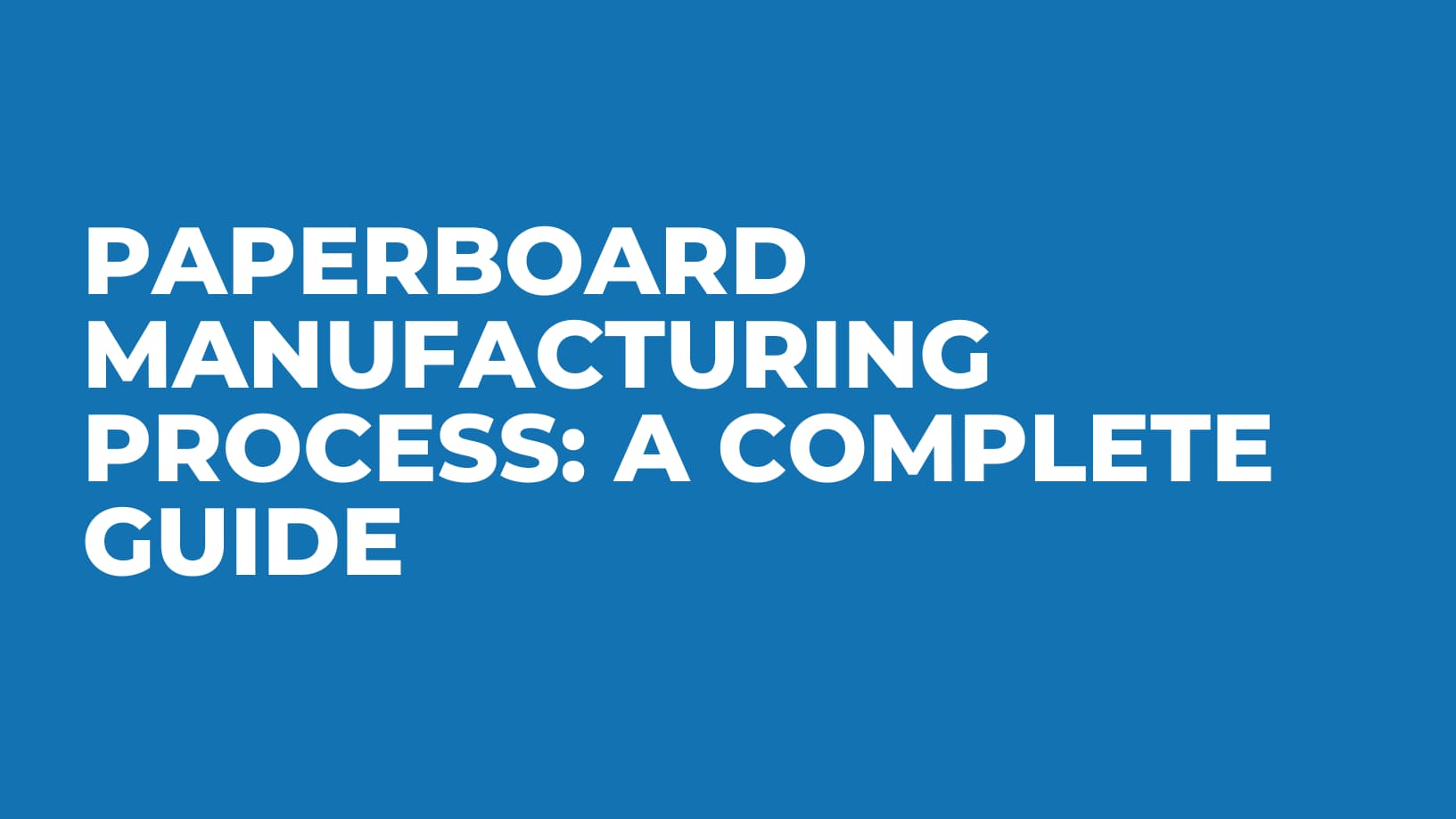Knowing about the paperboard manufacturing process is essential if you are looking to establish a new business of paperboard. The paperboard manufacturing market has been witnessing a significant rise in recent years. The increasing demand for sustainable and eco-friendly packaging solutions is the catalyst behind this growth.
In 2021, the global paperboard packaging market was valued at USD 194.5 billion. This figure has risen to USD 213 billion by 2023. With continuous advancements in technology and rising environmental awareness, the market is expected to reach USD 299.4 billion by the financial year 2031.
In 2021, the global paperboard packaging market was valued at USD 194.5 billion. This figure has risen to USD 213 billion by 2023. With continuous advancements in technology and rising environmental awareness, the market is expected to reach USD 299.4 billion by the financial year 2031. To enter this business, it is crucial to understand the paperboard manufacturing process. This blog explores the key aspects of paperboard, its uses, the paperboard manufacturing process, the machines used in this process, and the future market trends. Let’s dive into the information.
What is Paperboard?
Paperboard is a multi-ply layered, thick, durable, and versatile material made from wood pulp, recycled paper, or a combination of both. In general, a multi-ply layered board with a base weight of 160g/m2 and above is called a paperboard.
Paperboard has a higher thickness and density than standard paper, making it suitable for packaging and various industrial applications. It is available in different grades, including solid bleached sulfate (SBS), coated unbleached kraft (CUK), folding boxboard (FBB), and chipboard. By following a particular paperboard manufacturing process each grade is made different from others.
Uses of Paperboard
Because of its structure and weight, paperboard has numerous uses in different sectors.
• Packaging: This includes food containers, drink cartons, pharmaceuticals, and other consumer items.
• Printing & Advertising: These include flyers, posters, book jackets, and business cards.
• Industrial Applications: These include furniture, building materials, and electric insulation.
• Eco-Friendly Alternatives: Initiatives aimed at sustainability include the use of recyclable paperboard instead of plastic containers.
Paperboard Manufacturing Process
The processes we are going to describe below greatly determine the quality of the paperboard product. There are many details for each step of the paperboard manufacturing process. Let us discuss these processes one by one.
The paperboard is produced from wood and recycled paper. This raw material is processed in many stages to get the final product.
Pulping: The raw materials are broken down into pulp using mechanical or chemical pulping processes. The wood is cut into wood chips to process in the pulping, while the recycled papers are directly processed for pulping.
Pulp Refinement & Cleaning: The pulp is further refined and cleaned to remove impurities like ink, adhesives, and contaminants. If the final product needed is a white paperboard, additional processing, such as bleaching, may be done.
Sheet Formation: The refined pulp is spread onto a wire mesh conveyor with the help of a headbox to remove excess water. Fibers bond together as the water drains, forming a continuous sheet.
Pressing & Drying: The wet sheet passes through press rollers to remove moisture. It then moves through heated drying cylinders for further moisture evaporation.
Coating & Finishing: A coating layer (clay or synthetic materials) may be applied to improve printability and durability. The sheet is calendered (pressed and smoothed) to achieve the desired thickness and surface quality.
Cutting & Packaging: The final paperboard is cut into custom sizes or rolls for distribution. Quality checks ensure that the product meets industry standards before shipping.
Machines Used in Paperboard Manufacturing Process
Paperboard manufacturing requires specialized machinery to ensure efficiency and quality production. Some essential machines include:
- Pulping Machines: There are various types of pulper machines in the paper industry. Depending on the requirements the machines are chosen. These are used to break down raw materials into pulp.
- Screening & Cleaning Equipment: Removes impurities from the pulp.
- Fourdrinier Machine: The forming section plays a very important role in the paperboard manufacturing process. It forms continuous paperboard sheets from pulp.
- Pressing & Drying Machines: Removes excess water and dries the sheets.
- Coating & Calendering Machines: Enhances surface finish and printability.
- Cutting & Packaging Machines: Prepares the final product for delivery.
To enter a new business, like paperboard requires a lot of research and various types of paperwork plus machinery. If you are looking for more information related to the paperboard manufacturing process and the pulp and paper industry, you can contact us and we will guide you in your new venture. Our team can help you to get the best pulp and paper machinery in the world, with customised options as per your requirements.
Conclusion
The paperboard manufacturing process plays a critical role in the packaging and printing industries. With growing environmental concerns, businesses are increasingly turning to sustainable and recyclable paperboard solutions. As the market continues to expand, investing in modern manufacturing techniques and eco-friendly innovations will be crucial for staying ahead in this competitive industry.
By understanding the fundamentals of paperboard production, businesses can align their strategies with market trends and contribute to a greener future.

